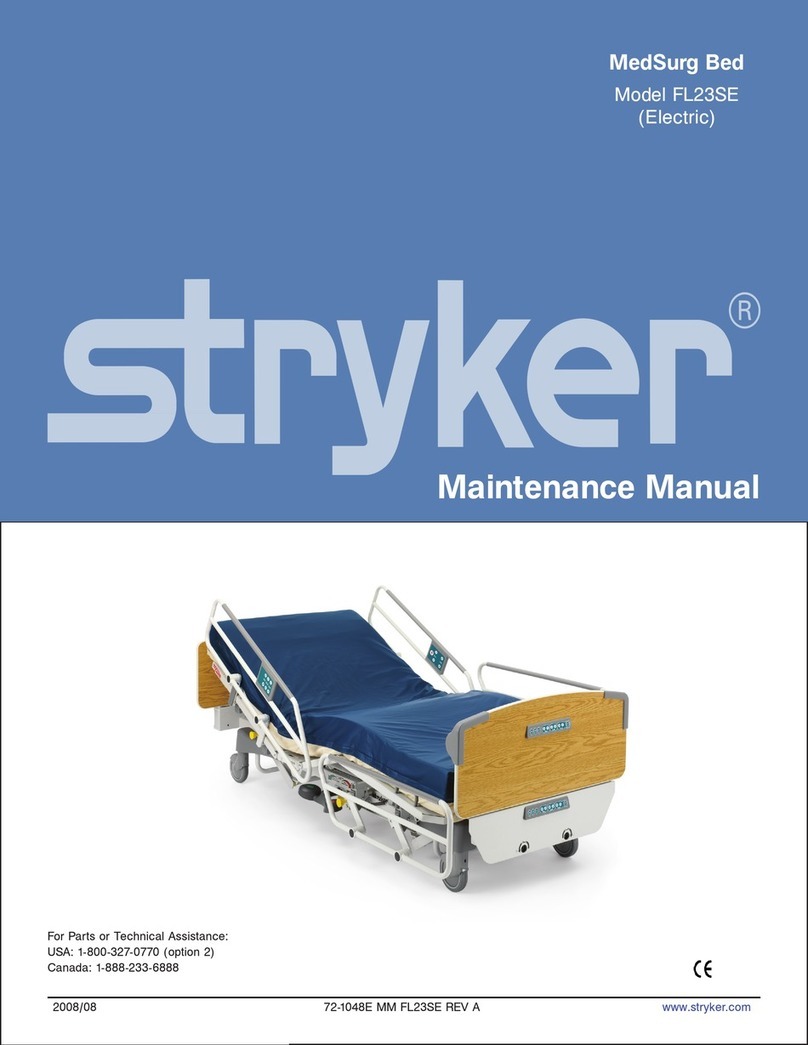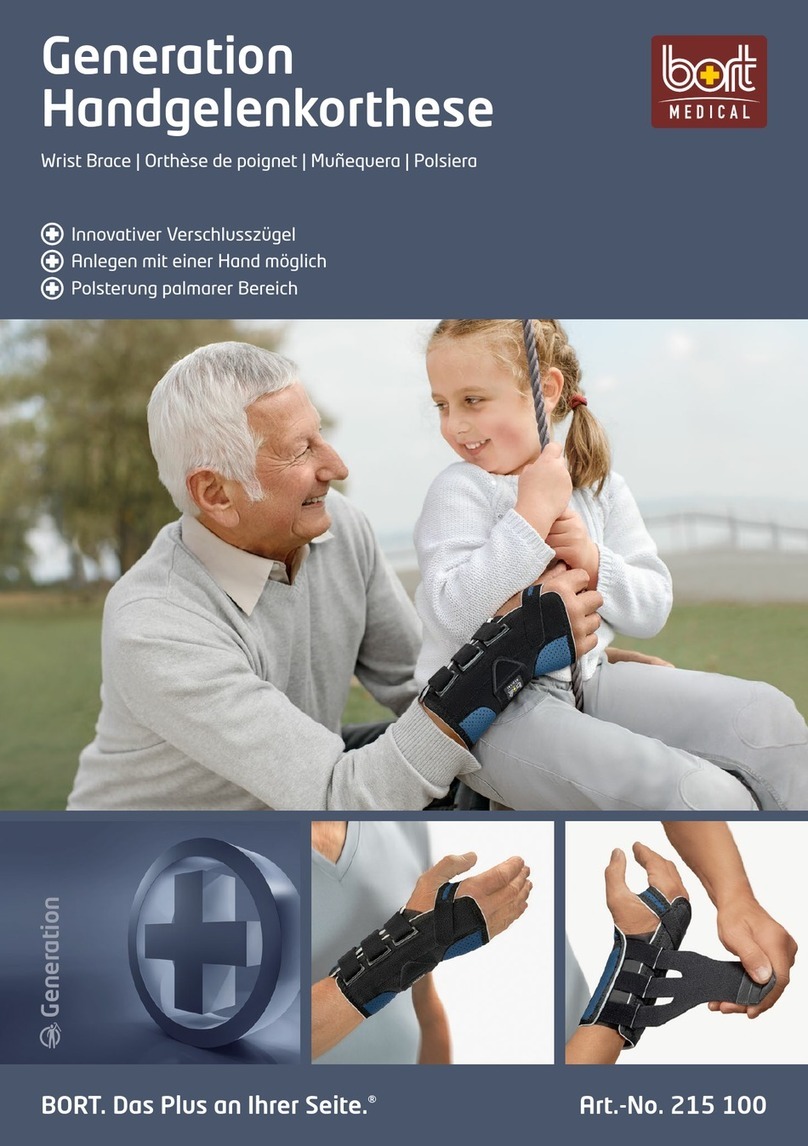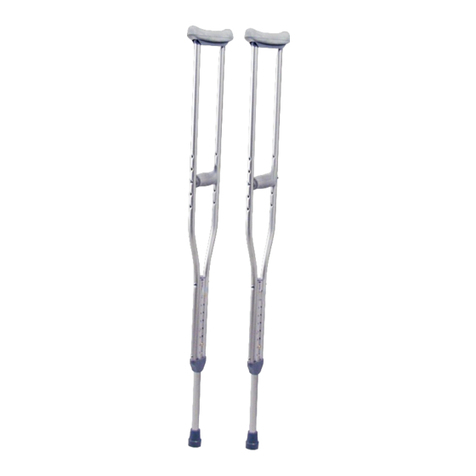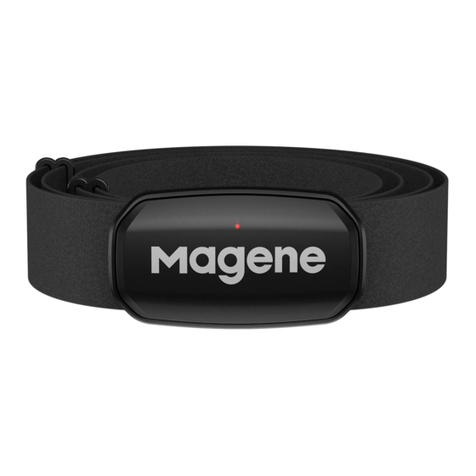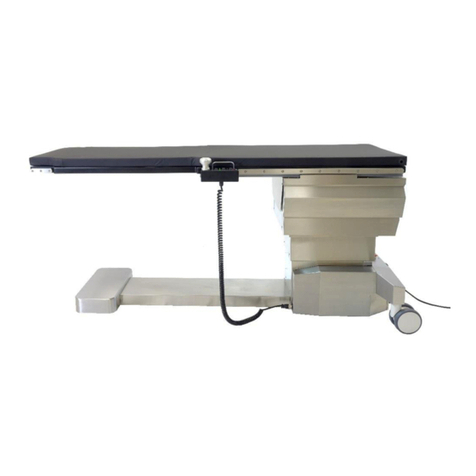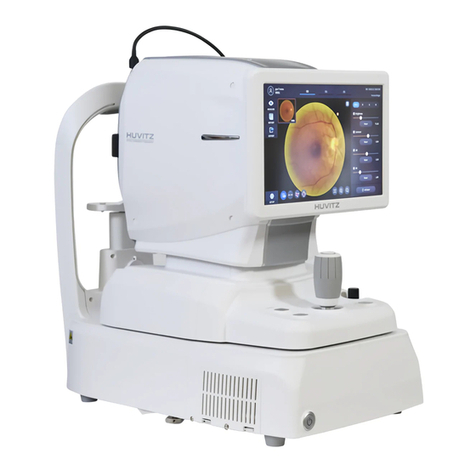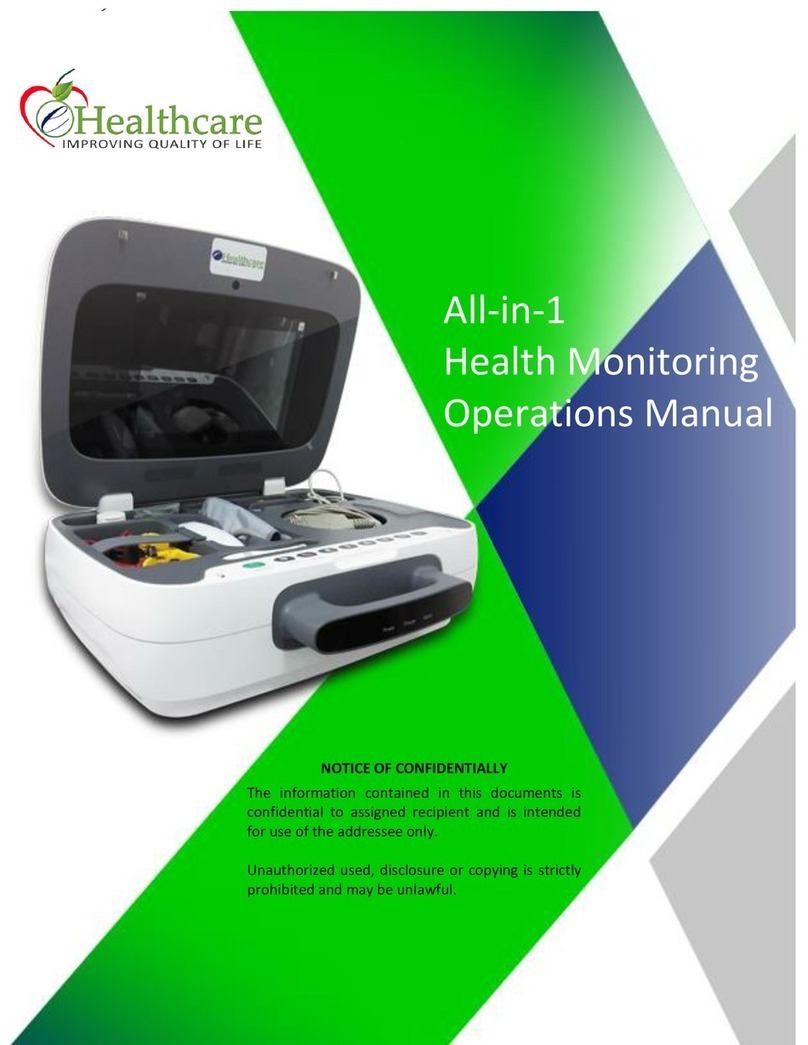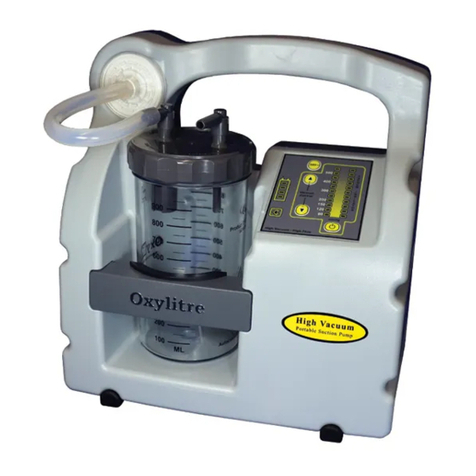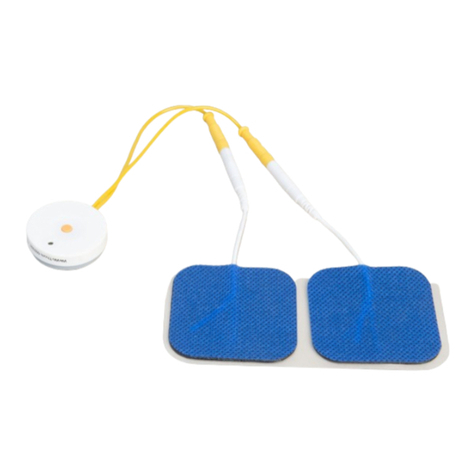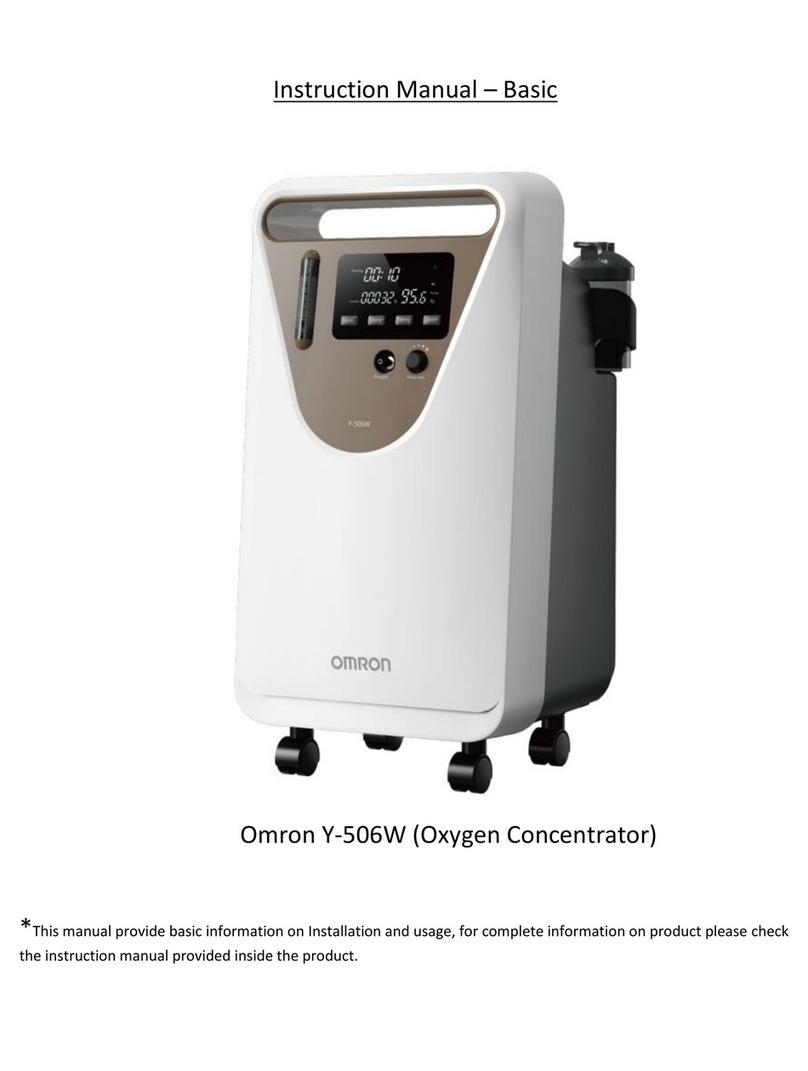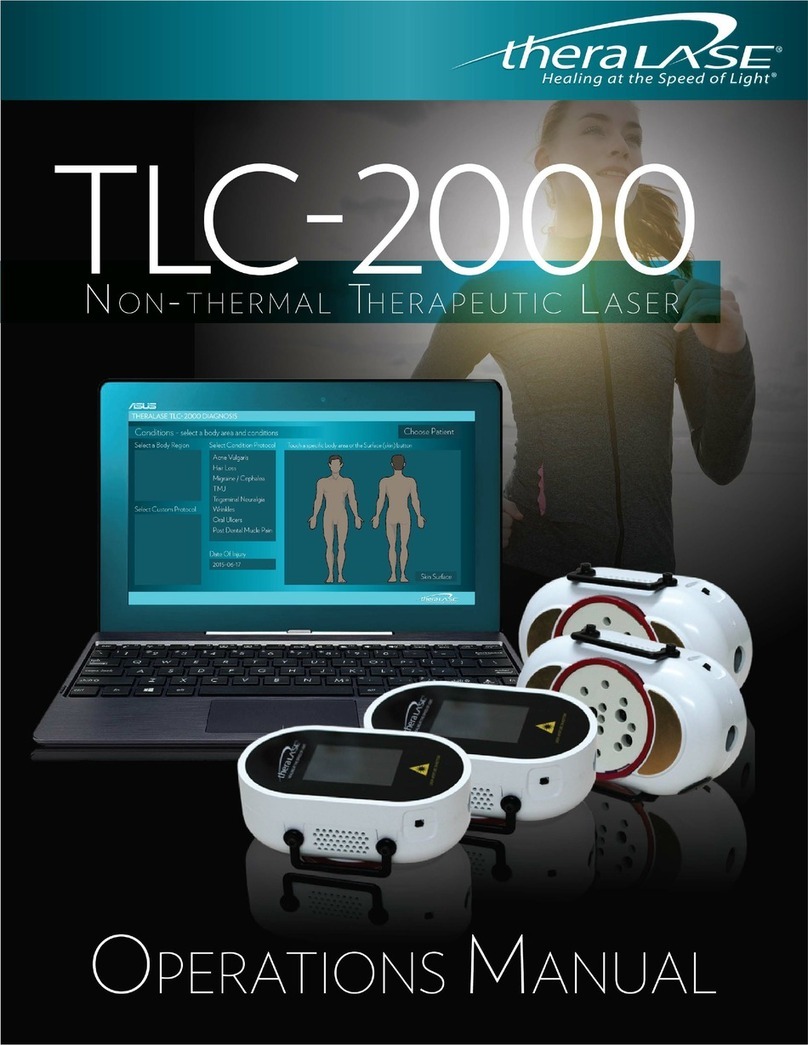ETION CUBE 25 NIV User manual

CUBE 25 NIV
COVID-19 setup guide

2 IDoc. Ref.: ETION‐MED‐MDF‐01‐06‐08 (Rev 05)
Regulatory Status and Use Authorization
The Cube 25 is manufactured in
South Africa under license from
JFR Medical Instruments.
CUBE 25 NIV
This ventilator (CUBE 25
NIV) is not registered by
the Authority and is only
authorised for emergency
use during the Covid-19
pandemic.
Decommissioning and Disposal
• The device is designed for a lifetime of ve years.
• Authorization is only provided for emergency use during the COVID-19
pandemic.
• The device must be de-commissioned at the end of the pandemic.
• The device can be recycled through appropriate recycling channels or may be
returned to the supplier for recycling.
The maximum FiO delivered by the Cube 25 NIV should be assumed to be 80%
Oxygen supplementation to the mask only (without oxygen supply via nasal prongs) seems to be not suitable
for the purpose of respiratory therapy in hypoxic patients.
FiO is aected by Mean Airway Pressure, Oxygen ow settings as well as patient demand and mask leak rates.
Use the diagram on page 9 only as a guidance. Physicians should closely monitor the patient’s Oxygen
Saturation (SpO) to ensure patient safety. Any patient treated using this device should always be connected
to an Oxygen Saturation measurement device and a drop below 85% should be immediately reported to the
attending physician and documented.
WARNING

Doc. Ref.: ETION‐MED‐MDF‐01‐06‐08 (Rev 05) I3
Intended Use
Key Ventilation Features
https://www.parsec.co.za/downloads/#cube25
• The CUBE 25 NIV is a device for non-invasive, non-life supporting ventilation of
spontaneously breathing patients who have a body weight of at least 13 kg and
suer from respiratory insuciency. It is not intended to be a replacement for life
supporting respiratory equipment.
• The CUBE 25 NIV ventilator is manufactured in South Africa to addresstheshortage of
ventilators for treating COVID-19 patients.
• The device has a Clinical and Patient mode. Once the device is set up by a clinician,
the day to day operation can be performed by the Patient or Care Worker.
• Clinical and User Manual can be found here:
Feature
CPAP
IPAP
EPAP
Target Volume
Backup rate
Inspiration Trigger
Expiration Trigger
Trigger Lock
Inspiration Time
TiMin
TiMax
Inspiration Slope
Expiration Slope
Alarms
FiO when Oadministered to
nasal prongs and breathing tube
CPAP
•
•
•
PSV-S
•
•
•
•
•
•
•
•
•
•
•
•
PSV-ST
•
•
•
•
•
•
•
•
•
PCV
•
•
•
•
•
•
•
•
•
•
•
•
•
•
APCV
•
•
•
•
•
•
•
•
•
•
•
Range
3 to 20 hPa
5 to 25 hPa
3 to 23 hPa
0 to 2000ml
4 to 30 bpm
1 to 5 steps
Auto, 30 to 70%
0,3 to 8 sec
0,4 to 5 sec
0,3 to 5 sec
0,4 to 5 sec
1 to 6 steps
1 to 6 steps
Audio and visual
0-80%

4 IDoc. Ref.: ETION‐MED‐MDF‐01‐06‐08 (Rev 05)
Device Interfaces
Device Controls
For further details refer to the User Manual

Doc. Ref.: ETION‐MED‐MDF‐01‐06‐08 (Rev 05) I5
Connecting the device to UPS
1. Ensure the therapy device is turned o.
3. Plug the AC adaptor into one of the clearly marked battery backed-up power sockets on the
UPS unit. Ensure that the UPS remains a minimum of 0.5 meters from the Cube 25 NIV and patient.
2. Plug the AC adaptor into the Cube 25 NIV. Clamp the cord securely to the Cube 25 NIV enclosure.
NOTES:
The UPS is not intended to be used to power your Cube 25, but for backup power purposes in the event of an
unexpected loss of power. The UPS must be placed at least 0.5 m away from the Cube 25 and patient.
Be certain to plug the UPS power cord directly into a wall outlet and not into a surge protector. The UPS outlets
are powered whenever the UPS is switched ON. During a power outage, the UPS outlets will be powered for
a limited time depending on the specications of the UPS. The UPS may take up to 6 hours to complete a full
charge.
Recommended minimum specications for an Uninterruptible Power Supply
• Uninterruptible Power Supply: 110 to 240 v
• Operation time: > 30min

6 IDoc. Ref.: ETION‐MED‐MDF‐01‐06‐08 (Rev 05)
Clinical Workows
Selecting Clinical/Patient Modes
Initial setup by Physician
1. Decide on treatment mode
2. Select clinical mode
3. Dene therapy parameters
4. Select therapy set
5. Exit clinical mode
New Patient
1. Disinfect CUBE 25 NIV device
2. Replace lter, mask etc.
3. Assemble new patient interface
- Refer to manufacturer instructions
4. Connect to CUBE 25 NIV to test
5. Check unobstructed ow
Treatment
1. Place nasal prongs in patient nostrils and start
administration of oxygen at 10L/min
2. With nasal prongs in situ, place the mask on patient
3. Press the Start/Stop button on CUBE 25 to start ow
4. Check unobstructed ow (remove plastic rectangular
lter cover)
5. Connect CUBE 25 to mask
6. Connect second oxygen feed AFTER starting CUBE 25
7. Adjust ow (if required) on both oxygen feeds to
required levels
8. Monitor patient O saturation, FiO and CO
9. Respond to alarms as necessary
- Audio pause will silence alarm for two minutes
10. Turn o second oxygen supply at end of therapy
11. Stop therapy on CUBE 25 after turning o second
oxygen feed
The device starts, in Patient mode.
The setting options are limited in this mode.
Display colours are Green or Purple in Patient
mode.
To switch between Patient mode
and Clinical mode, press
Audio Pause and OK simultaneously
The display colour changes toBlue ,
The message “Clinical mode - Medical experts
only” appears.
Clinical Guide User Guide
Refer to the Clinical Guide for more information

Doc. Ref.: ETION‐MED‐MDF‐01‐06‐08 (Rev 05) I7
CUBE 25 NIV Settings for COVID-19 Treatment
Selecting Therapy Modes and Therapy Sets
A physician is required to select the therapy
mode and program the parameters in Clinical
mode.
Maximum two therapy sets can be
programmed.
Once the therapy set has been set up,the
therapy set can be selected by trained sta or
the Patient.
• CPAP
• PSV-S / Bilevel S
• PCV Bilevel T
• PSV Bilevel ST
• APCV
Refer to the Clinical Guide for more information
CAUTION
A physician must set the correct therapy.
The Cube 25 NIV has been tested for the following modes using a breath rate of 12 bpm and 20 bpm :
• CPAP – Refer to Oxygen ow rate vs Mean Airway Pressure (MAP) for FiO Estimation in CPAP mode
as presented in the FiO Estimation diagram on page 9 of this document.
• PSV/Bilevel ST - Refer to FiO diagram on page 9 of this document.
The Cube 25 NIV must be setup in the Therapy Settings of the device for Tube Length of 1.8m / 22mm
and the setting for the Bacterial Filter must be turned to YES.
The unit of measure is selectable in the Therapy Settings.

8 IDoc. Ref.: ETION‐MED‐MDF‐01‐06‐08 (Rev 05)
Mask Breathing Circuit Component List
#Item Part number Manufacturer
1
2
3
4
5
6
7
RCNC1161
P001Z002
1963000
1690001
CCSC1963
1514 or 1515 or 1516
1174000
CMS
Included with CUBE 25
CMS
CMS
CMS
CMS
CMS
CMS: Channels Medical Solutions
Mask Patient Circuit Setup
8 UPS850LI CMS
Standard Oxygen tubing with Nasal Prongs
Breathing tube system, Ø 22 mm, 1.80 m
Straight connector 22M - 6mm OD stem and
cap - 22F (with cap removed to ensure leak)
Bacterial / Viral lter – in/exhalation
Oxygen adaptor for secondary oxygen feed
Anaesthetic mask Size 3, 4 or 5
Standard Oxygen tubing for secondary oxygen feed
Uninterruptable Power Supply (Not shown on image)

Doc. Ref.: ETION‐MED‐MDF‐01‐06‐08 (Rev 05) I9
Estimating FiO
Oxygen must be administered under the supervision of a physician
Do not use if damaged
CAUTION
The maximum FiO delivered by the Cube 25 NIV should be assumed to be 80%
Oxygen supplementation to the mask only (without oxygen supply via nasal prongs) seems to be not suitable
for the purpose of respiratory therapy in hypoxic patients.
FiO is aected by Mean Airway Pressure, Oxygen ow settings as well as patient demand and mask leak
rates. Use the diagram below only as a guidance. Physicians should closely monitor the patient’s Oxygen
Saturation (SpO) to ensure patient safety. Any patient treated using this device should always be connected
to an Oxygen Saturation measurement device and a drop below 85% should be immediately reported to the
attending physician and documented.
WARNING
NOTE: This could be a bridge therapy for patients that require more than just oxygenation supplementation.
The above table provides guidelines for the range of FiO to be expected based on the device
pressure settings (CPAP/IPAP/EPAP) and the O ow rate as set up using the ow meters.
Refer to page 8 item 1 (Primary to Nasal Prongs) and item 7 (Secondary to Breathing Circuit).
For CPAP Mode: Use the pressure setting as Mean Airway Pressure (MAP).
For Bilevel Modes: The Mean Airway Pressure can be calculated (at I:E ratio of 1:2):
MAP = (IPAP/3) + (2 x EPAP/3)
Estimating FiO
Mean Airway Pressure, cm HO
100
90
80
70
60
50
40
30
20
FiO %
510 15 20 25
5/10 8/12 10/15 12/20
CPAP
Setting
Bilevel
Setting
(EPAP/IPAP)
Oxygen feed: Adjust on owmeter
5 litres / minute to Nasal Prongs
10 litres / minute to Secondary Feed
Oxygen feed: Adjust on owmeter
5 litres / minute to Nasal Prongs
5 litres / minute to Secondary Feed
Oxygen feed: Adjust on owmeter
0 litres / minute to Nasal Prongs
5 litres / minute to Secondary Feed
Oxygen feed: Adjust on owmeter
5 litres / minute to Nasal Prongs
0 litres / minute to Secondary Feed

10 IDoc. Ref.: ETION‐MED‐MDF‐01‐06‐08 (Rev 05)
Alarms (1/3)
High priority
The result of a high-priority alarm can be the death or irreversible injury to the
patient. This is shown in the device display by three red triangles.
An acoustic signal also sounds
Moderate priority
The result of a moderate-priority alarm can be reversible injury to the patient. It is
shown in the device display by two yellow triangles.
An acoustic signal also sounds
Low priority
The result of a low-priority alarm can be minor, reversible injuries to the patient or
slight damage to the device. It is shown in the device display by a turquoise triangle.
An acoustic signal also sounds
Audible and visible alarms indicate various fault conditions.
Acoustic signals
In addition to the visual signals in the device display the device also issues an acoustic signal. This
consists of a sequence of tones that vary depending on the nature of the alarm and priority. The
sequence of tones is indicated by the letters forming each tone pitch (c, a, f, e).
The C is an octave above middle C.
CUBE 25 COVID-19 specic cleaning instructions
1. Appropriate PPE must be worn when the device is decontaminated (K95 mask, face shield, gloves
and coveralls).
2. Perform cleaning in a well-ventilated area.
3. Remove coarse and ne lter and dispose of the used lters.
4. Clean the device using one of the following cleaning methods:
Bleach Solution
4.a. Use a solution of bleach to
water of 1000 to 5000
ppm.
The mixture must be less
than 24h old.
4.b. Use a clean lint free cloth
dampened with the
mentioned bleach solution
and wipe all obvious dirt
from the device.
4.c. Use a new, clean lint free
cloth dampened in the
bleach solution and wipe
down the device 3 more
times, each time waiting
for 2 minutes before
starting again.
Isopropyl Alcohol
4.a. Use a 70% Isopropanol
(IPA) solution also known
as rubbing alcohol.
4.b. Spray the outside of the
device with IPA solution.
4.c. Use a clean lint free cloth
and wipe all obvious dirt
from the device.
4.d. Spray the device again
and wait for 5 minutes
(disinfectant contact time).
RBT
4.a. Use a 3% Ready to Use RBT -
Protectus Viridis solution.
(Follow manufacturer
instructions.) or similar
instrument disinfectant.
4.b. Spray the outside of the
device with RBT - Protectus
Viridis solution or similar
instrument disinfectant.
4.c. Use a clean lint free cloth
and wipe all obvious dirt
from the device.
4.d. Spray the device again and
wait for 5 minutes
(disinfectant contact time).
5. Wipe o any excess disinfectant with a clean lint free cloth.
6. Connect the Cube 25 NIV to ResComf XD100 (or equivalent) for a period of 30 minutes.
7. Replace coarse and ne lter with a new set before using it on the next patient.
The ResComf XD100 CPAP cleaner generates ozone (O) which is harmful in high concentrations or
extended exposure. Ensure adequate ventilation during the cleaning process. (Follow manufacturer
instructions.)
CAUTION

Press the Audio Pause button to silence the sound for two
minutes while addressing the issue
Doc. Ref.: ETION‐MED‐MDF‐01‐06‐08 (Rev 05) I11
Alarms (2/3)
Alarms (3/3)
For further details refer to the User Manual
Display Priority Acoustic
c a f
Low minute volume
Cause
The respiratory minute volume
is lower than the set limit value.
Trigger
10 sec
Resolution
The patient’s condition
should be checked.
Low e cHigh respiratory rate The respiratory rate exceeds
the set limit value. 5 sec The patient’s condition
should be checked.
Moderate c a f
Low respiratory
rate
The respiratory rate is below
the set limit value. 5 sec The patient’s condition
should be checked.
Moderate c a f
Target volume not
reached
The target volume is not
reached despite the maximum
indicated inspiration pressure.
Immediately The patient’s condition
should be checked.
c a f
Target minute
volume not reached
The target minute volume
is not reached despite the
maximum indicated inspiration
pressure.
Immediately The patient’s condition
should be checked.
Display Priority Acoustic
c a f - a f
Circuit
disconnection
Cause
Fall in pressure during exhalation.
Tube system probably detached.
Trigger
10 sec
Resolution
Check tube
connections.
2 min.
Beep
Mains failure The device no longer has
power supply. Direct Check the power
supply connection.
c a f
Tube blocked Obstruction in the tube system. 10 sec
Check for blockages.
Remove and restart
therapy.
C c c
System error There is an internal error or
EM interference. Direct Refer to User Manual
for more detail.
c a f
High pressure
Therapy pressure exceeds set
limit value. 10 sec
Stop the therapy.
Refer to User Manual
for more detail.
High
Low e c
Leakage High system ow (leakage)
detected. The respiratory mask
has possibly slipped.
10 sec Check the t of the
respiratory mask.
Moderate c a f
Mon vented mask
A respiratory mask is being
used without an air outlet,
or the air outlet is blocked.
10 sec
Ensure patient is using
mask with air outlet.
Check that air outlet is
not blocked.
For further details refer to the User Manual
Moderate
Moderate
Moderate
Moderate
Moderate
Moderate

info.etioncreate@etion.co.za
T: +27 12 678 9740
info@channels.co.za
T: +27 86 111 4028
Warranty
ETION Create (Pty) Ltd, (“the Manufacturer”) warrants that the Cube 25 NIV
(“the Goods”), exclusive of expendable parts and other accessories, shall be free
from defects in material and workmanship for a period of
12 (twelve) months from the original date of delivery, and shall conform to its
specication at the time of delivery.
The Manufacturer appoints authorised resellers (“Suppliers”) to resell and
distribute the Goods on its behalf. All warranty communications must be
directed at the Supplier from whom your Goods have been purchased.
The Manufacturer shall within the warranty period repair or replace, at its
sole discretion, any item which is proven to the Manufacturer’s reasonable
satisfaction to be defective, provided that:
• The Customer has given written notice to the Supplier within 30 (thirty)
days of the discovery of a defect;
• The Goods have not been modied in any way;
• Such defects did not occur due to inadequate storage, incorrect or misuse,
improper handling, improper maintenance, tampering or negligence by
any person;
• The Goods were used under normal operating conditions and in
accordance with the Manufacturer’s written instructions.
CUBE 25 NIV Service, Maintenance and Repair
Components Interval
Breathing device
CUBE 25 NIV
Power cable
Coarse lter
Fine lter
Transport bag
Blower
When patient changed
When patient changed
At the latest after 1 500 operating hours or
when changing patients
Every 1 000 operating hours or when dirty
When patient changed
Every 20 000 operating hours
Disinfect the device surfaces
Disinfect the power cable
Replace coarse lter,
earlier if damaged
Replace ne lter
Replace transport bag
Have the device serviced at
supplier for safety check and
blower replacement.
Activity
If the device is used without Bacterial/Viral lter or contamination is suspected, contamination
disinfection protocol shall be followed. Refer to COVID-19 Specic Cleaning Instructions.
Never use if damaged.
WARNING
Authors:
Jaco Botha and Sanet Groenewald
Contributors:
Andre van Tonder
Andre Ten Napel
Björn Kleinschmidt
Jaco Basson
Date:
2021-02-05
Doc Ref.:
ETION-MED-MDF-01-06-08 (Rev 05)
In the event of the warranty becoming void as a result of an occurrence specied
in paragraph 3a to 3d above, the Manufacturer will provide the Customer with
a written notice of its reason for rejecting the warranty claim.
The Customer shall, in accordance with the Supplier’s written instructions,
deliver the defective item(s) at the Customer’s expense, at a location designated
by the Supplier, in which event the said item(s) will be repaired or replaced
according to the Manufacturer’s standard practices and procedures.
Any item which is replaced will become the property of the Manufacturer. Upon
completion of the repair/replacement, the Supplier shall deliver the repaired or
replaced item to the Customer at the original delivery address.
The provisions of the warranty shall apply to a repaired/replacement item for
the remainder of the warranty period.
This warranty is exclusive and in lieu of all other warranties, obligations
and/or liabilities, express or implied, whether arising in contract, delict, law,
including negligence, or otherwise, and the Manufacturer’s/Supplier’s liability
is restricted to the repair or replacement of the defective item. In no event
shall the Manufacturer or the Supplier be liable for incidental, special and/or
consequential damages.
Table of contents
Popular Medical Equipment manuals by other brands
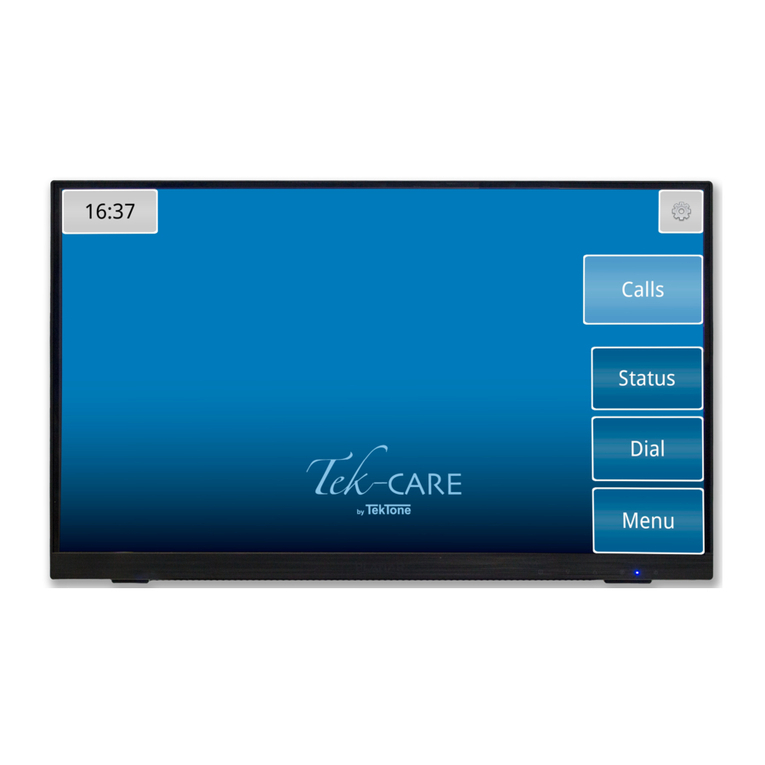
TekTone
TekTone NC403TS Installation and operation manual
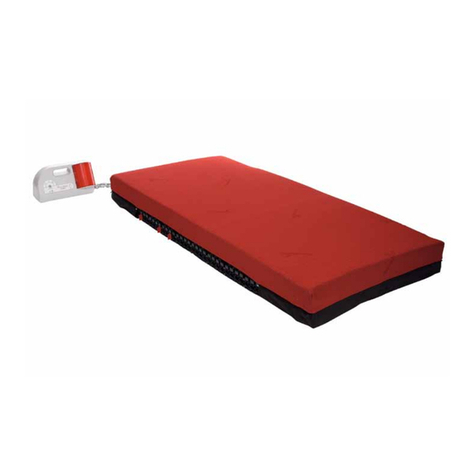
Thomashilfen
Thomashilfen ThevoActiv user manual
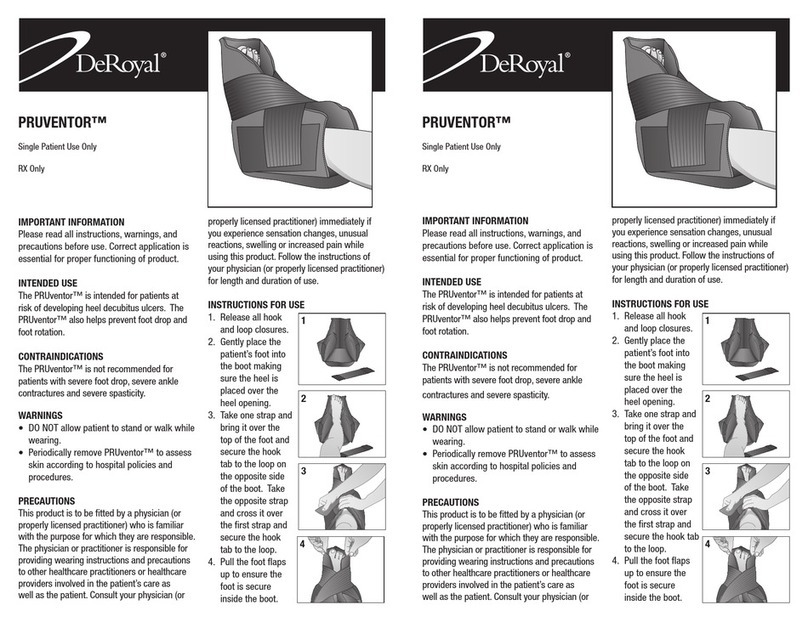
DeRoyal
DeRoyal PRUVENTOR Instructions for use
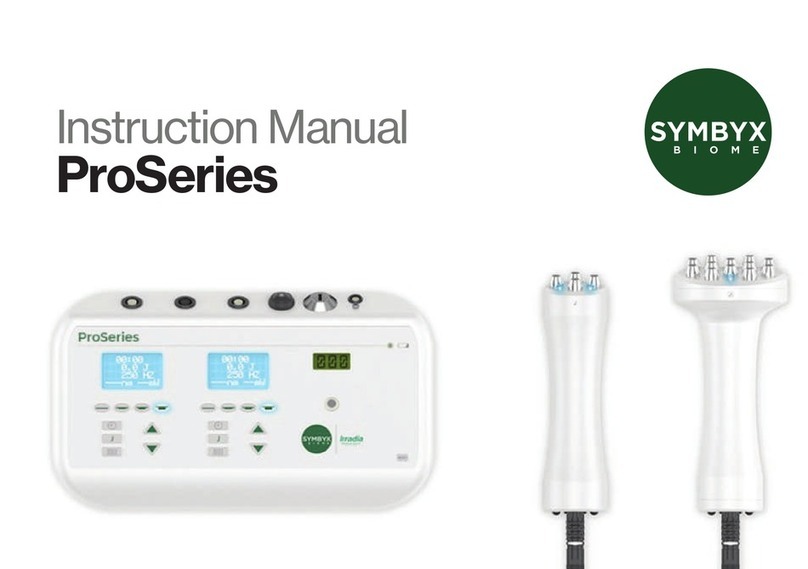
SYMBYX
SYMBYX BIOME ProSeries instruction manual
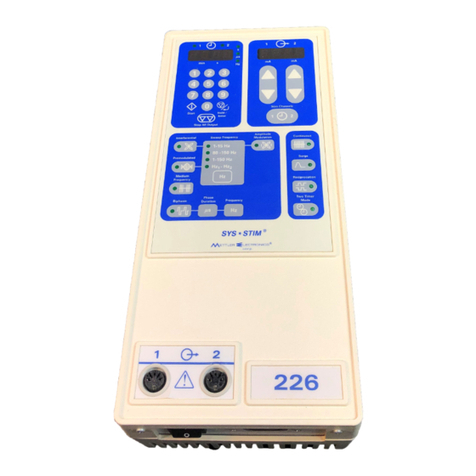
Mettler Electronics
Mettler Electronics Sys*Stim 226 instruction manual
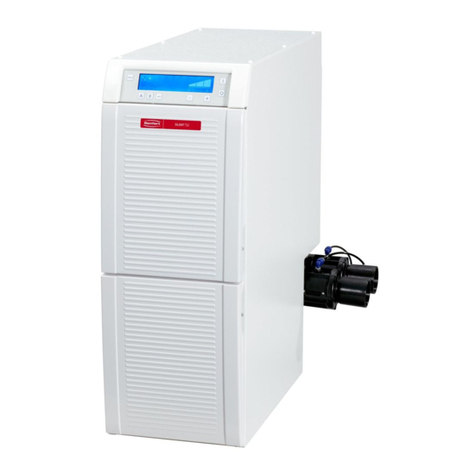
Renfert
Renfert Silent TS2 instruction manual
